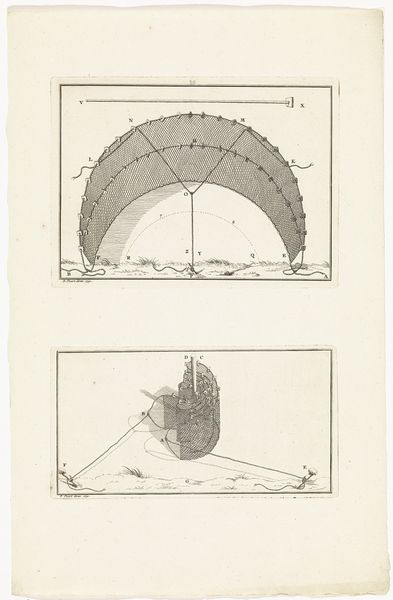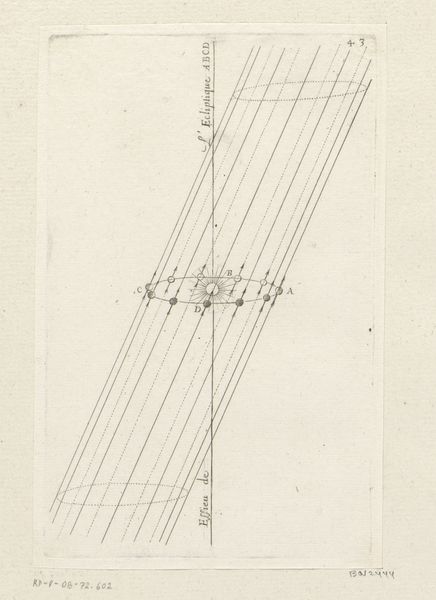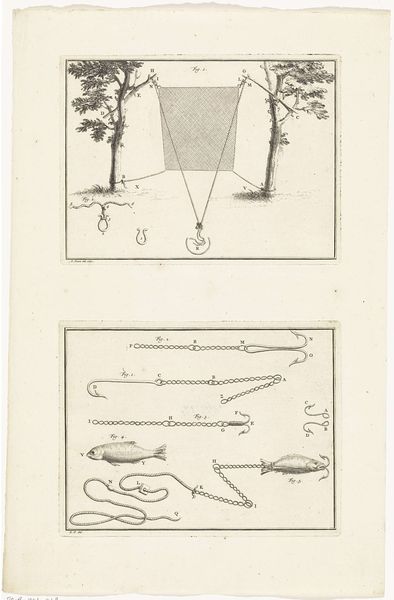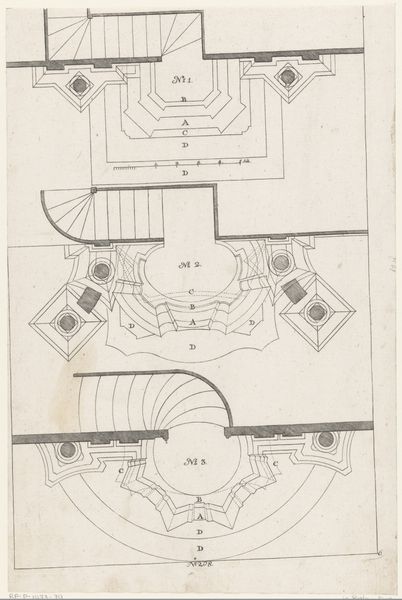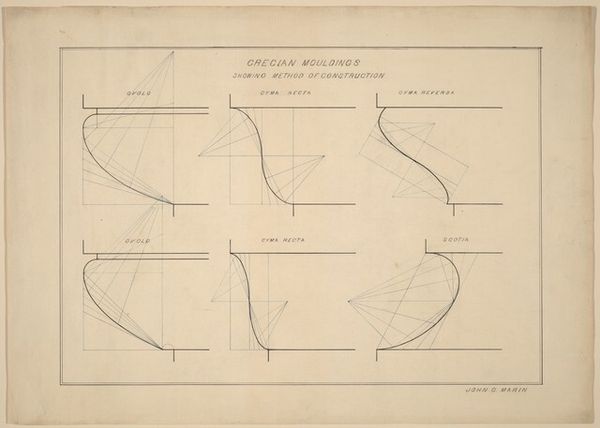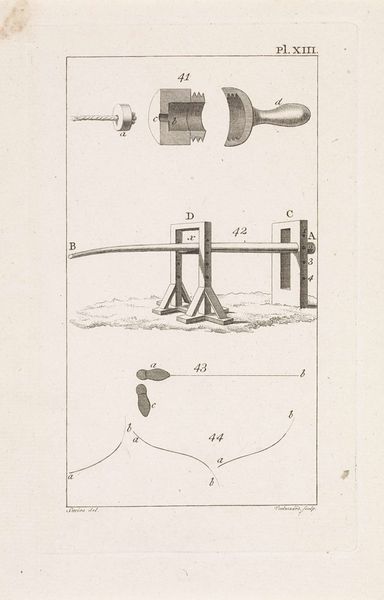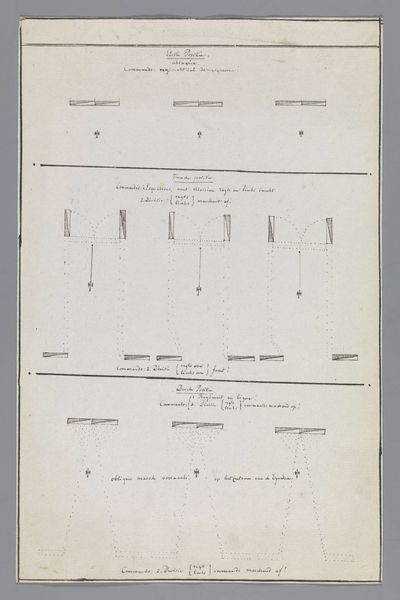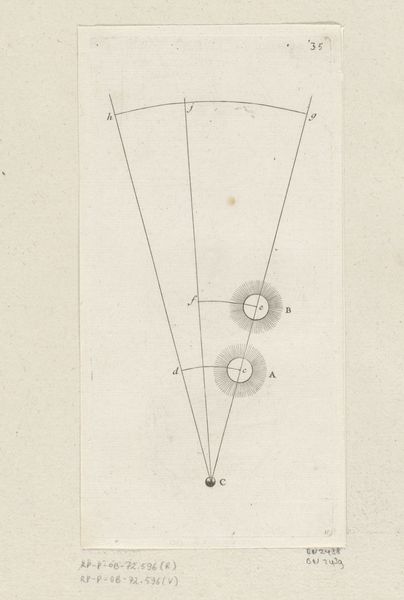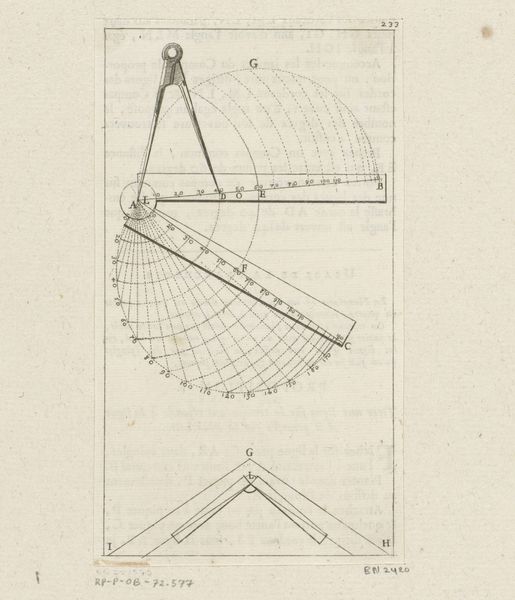
drawing, print, etching, engraving
#
drawing
#
baroque
# print
#
etching
#
old engraving style
#
etching
#
engraving
Dimensions: height 225 mm, width 187 mm
Copyright: Rijks Museum: Open Domain
Bernard Picart's etching, "Construction of a Mousetrap," presents a seemingly simple device, yet it opens a labyrinth of symbolic associations. The mousetrap itself, meticulously rendered, speaks of ingenuity and control, embodying humanity's perpetual struggle against nature's intrusions. Consider the mouse, a creature laden with symbolism. Across cultures, it embodies not only pestilence and destruction, but also hidden knowledge, survival, and even resurrection. In ancient Egypt, the mouse was associated with the soul's journey through the underworld. Note the trap’s design: a carefully calibrated mechanism poised to ensnare. This evokes the ancient motif of the "wheel of fortune," or the web of fate. Think of the Greek Moirae spinning the threads of destiny or the relentless cycles depicted in Buddhist mandalas. Picart's mousetrap, then, is not merely a tool but a microcosm of human existence. It speaks to our relentless pursuit of order, our confrontations with the unpredictable, and our enduring dance with fate, engaging viewers on a deep, subconscious level. The image reflects our continuous effort to predict and control our environment, a cycle that resurfaces, evolves, and takes on new meanings across historical contexts.
Comments
No comments
Be the first to comment and join the conversation on the ultimate creative platform.
